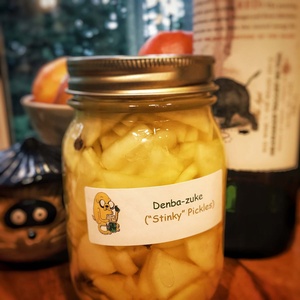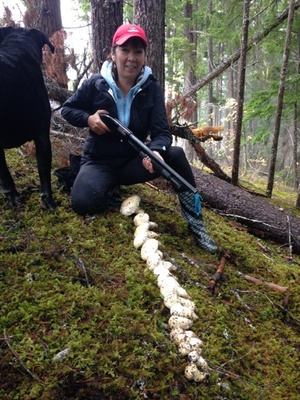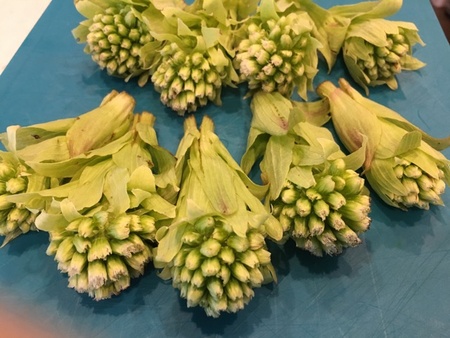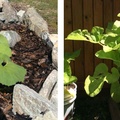How can you tell a Nisei by looking at the food they eat? Have you heard of Cumberland chow mein, denbazuke, or karinto? In the case of Japanese Hawaiians, you have heard of and most likely have eaten Spam sushi. Spam sushi became popular after World War II when the Nikkei 442nd soldiers returned from Europe, and having Spam as their staple diet, they invented this type of fusion sushi. The other creation is their breakfast where a fried egg and hamburger patty is served on top of the hot rice. I’m sure soya sauce was sprinkled on the egg. As for the Canadian Nikkei, the Issei labourers who first came to British Columbia had very few Japanese ingredients to speak of. Geography determined what they ate as well, as in Cumberland, B.C. on Vancouver Island. Robert Dunsmuir around 1891 hired Japanese coal miners who came mostly from the Kyushu area where coal mining was prominent. This is where Cumberland chow mein (Ka-m-bah lan-doh cha men) evolved.
Hastings Sawmill Company hired hundreds of Japanese labourers to work down at the foot of Dunlevy Street. Hence, Powell Street’s Japantown was created in the early 1900s. By this time, Japanese ingredients were imported from Japan. Locally, there was a tofu and age shop owned by the Tanaka family. Japanese grocery stores and restaurants sprang up. Even before the buzz word “fusion” was in vogue, Fuji Chop Suey Restaurant served up fusion Chinese–Japanese cuisine. They cooked Chinese food that leaned more towards Japanese taste.
In many of the smaller communities where the Japanese Canadians were visible, like Cumberland, Chemainus, Steveston, Englewood, Nanaimo, Royston, and even Woodfibre and the Nass Valley, fusion meal morphed into “Japanese food.”
Take for instance, Cumberland, B.C. There were two Japanese camps, #1 and #5. Japanese ingredients weren’t available, but fortunately there was a Chinese settlement, so some Asian spices were sold. They substituted Italian vermicelli noodles for mein and cut up either chicken or pork with onions, mushroom, carrots, and celery to make this uniquely fusion. Later on, they used Chinese mein.
In Greenwood, former Cumberland residents showed the other Japanese Canadians from the coast how to make this chow mein. In time, Greenwood Nikkei ladies started making mein that made chow mein even tastier! With flour and eggs, they deep-fried the noodles to make it crispy. This chow mein looked more like the Chinese chow mein you see in the restaurant but the taste was so different that it was indeed a Nikkei creation. In Greenwood, sliced cabbage was sometime used with onions, celery, along with either chicken or pork. Poor man’s chow mein was hamburger. For a left-over meal, chow mein sandwiches were popular too. So you see, fusion food is not an innovative cuisine. It’s been around for hundreds of years.

Photo courtesy of John Endo Greenaway.
In the New Denver internment camp, daikon was planted and it seemed to survive the harsh winter there. Therefore, someone invented denbazuke. This pickle looks similar to takuan but it’s preserved with vinegar rather than being fermented. Now, these pickles are probably the tastiest and very commonly eaten by Nisei who learned how to make them in the internment camps. If you ever visit the home of Nisei who love these pickles and open their fridge door, you will instantly smell the distinct odor of denbazuke! Once a Caucasian friend came to my place and when I opened the fridge door she yelled, “What’s that smell!” Denbazuke is the stinkiest but the tastiest! My great niece calls it “stinky pickles.”
Biyazuke could be another Nisei creation. It’s called beer pickles. Cucumber is used and fermented with beer and miso.
In Japanese, mottainai is repeated frequently, especially by the older generation. Therefore, going matta-ke tori (mushroom picking, but matsutake was like gold), nori tori (seaweed gathering), niwatoko hunting (leaves to make green tea), and of course huckleberry and Saskatoon berry picking were annual events. In the garden, when snowpeas (saya endo) are harvested in July, the stalks are dried in the summer. Then, it’s baked in the oven to make a special green tea that has a distinct odor and taste. It may be likened to barley tea. My dad used to mention niwatoko and he told me that they are best found along the railway tracks.
In Japan, they have karinto but they are very different from the Nisei karinto. Japanese karinto use brown sugar whereas Nisei karinto use more of a sweetened teriyaki sauce. It’s very labour intensive but well worth the wait. The dough has to be made and cut into short pieces. There is a waiting period. Then, it’s deep fried one batch after another. Next, the soya sauce and sugar glaze is spread across the deep fried “crackers.” Sesame seeds are added for extra flavor. Finally, it’s cooled to make this unique karinto that is desired by everyone. If you go to a Nikkei fair, karinto sells out within minutes even though it’s $5 for a small bag!
Where they lived, and what ingredients were available, determined what the Nisei ate. Even to this day, they still retain that “Japanese” taste by sprinkling soya sauce on their T-bone steak, fried eggs, bologna, and fried vegetables, but they will not use soya sauce on hot rice.
Teriyaki weiners, egg omelette, and nori or sesame seeds sprinkled on onigiri will invariably be present at a Nikkei picnic. Instead of saying ka-re ri-su, some Nisei will say ka-re go-han for curry rice. Fried rice with bacon was very tasty so it was commonly called be-kon meshi. Another simple dish that one could call “family stuffer” is the stir fried cabbage and “chimpo” sausages. Sukiyaki with tomato and swirled eggs added in the pan may be unusual for the Japanese, but not to the Nisei.
When you visit places where the Japanese immigrants lived, you will invariably see fuki or bogs rhubarb. That was another delicacy. If you go to #1 Camp in Cumberland, you can see both gobo and fuki still growing in the fields. On Seaview Avenue on Salt Spring Island, fuki that Yorie Tasaka planted has been growing for over 100 years. I’m sure you can find more around the Gulf Islands. Gobo (burdock roots) makes great kinpira. The Nisei makes it with teriyaki sauce so it’s like eating karinto. Young people love it!
Pakkui (sweet and sour pork) was another Nisei fusion food that probably originated from the Chinese dish. In Victoria and Cumberland, B.C., the Japanese Canadians lived amongst the Chinese or they were neighbours. Fisgard Street in Victoria was Chinatown, but the Japanese establishment was side by side on Short Street. Chinese and Japanese coal miners’ settlements were next to each other. Pakkui is similar to Chinese sweet and sour but I noticed there were more vegetables added with the pork.
A more distinctly Japanese dish was called O-kai-san or O-kai-yu. This is a rice soup where old rice is added to the green tea broth. If sweet potato or yam is added, it is called Chagai-imo. Ichinen cha is more desirable for better broth. Since a place like Steveston was a fishing village, the okazu was salmon, smoked herring, or sato-zuke (sweetened teriyaki glazed) that’s cooked in the oven. Tsukemono and nori go well with O-kai-san too. Even today, some Steveston families have a once a week Okai-yu day for the family and friends.
For snacks, Nisei ate oven-dried broad beans. It was called He-no-mame or fart beans.
Mothers would holler, “Gohan yo!” That meant it was either asa (breakfast), hiru (lunch), or ban (dinner) gohan. This could be a dialect. At the center of the table in a Nisei home, you will find a red tin can of aji-no-moto (MSG), chopstick container, and shoyu over a doily. At the kitchen table, mothers would keep a watchful eye on their children to inspect that they have eaten every kernel of rice. If not, she would reprimand in Japanese, “If you don’t eat the last piece of gohan in the bowl, you will go blind!” In Japan, they will often pour green tea to clean out the few morsels of rice left in the bowl at the end of their meal, however, for the Nisei, o-chazuke was part of a main meal. It was tea on rice with tsukemono and most likely Prem or bologna for okazu. For snacks, children would be offered ame-dama (red ginger flavoured candy) and chi-chi boru, tiny round Japanese biscuits that looked like women’s nipples.
Nisei can eat western (yoshoku) and Japanese (nihon shoku, washoku in Japanese) food with equal ease by fusing them together.
Nisei created simple cuisine determined by what was available in their community or camps. To date, we have Cumberland chow mein, New Denver pickles, Greenwood mein, and there may be more where the Nisei lived after the war. I’m sure there may have been Nisei delicacy made in the prairie provinces? If you know of any more regional cuisine that is uniquely Nisei, please let us know.
*This article was originally published in the Geppo The Bulletin: a journal of Japanese Canadian community, history + culture on February 2, 2016. It has been edited by the author for Discover Nikkei.
© 2016 Chuck Tasaka







